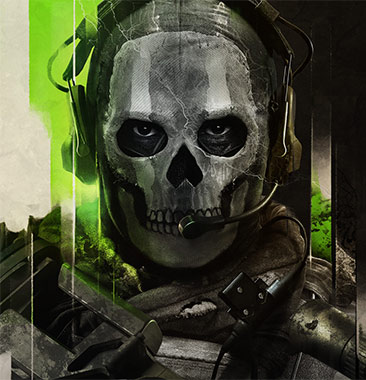CLOSE COMBAT: INVASION NORMANDY!
That's right boys, time to fight the good fight, and take the battle to the
Germans on their own land in this wonderfully done strategy game from SSI
INC.
OVERVIEW
Now keep in mind that when playing CC, you have total control over every
aspect of the game. Short of telling the enemy what to do, you can control
what troops you, or the enemy, has on the field, whether you can see them,
how they behave, and what sort of conditions you want to have to win. And
that's before you even get into the actual fight. As you play the game more
and more, keep these things in mind.
Table of Contents:
1. Strategy
2. Tactics
3. Supporting Fire (Barrages)
4. The Units
5. Map Maker
1. STRATEGY: The Big Map
When you start a campaign or mission (not the single map battles), you will
see the territories that you can fight over. Those you can't be will
darkened. Those you can take control of will have a flag designating them.
It is in this stage of play that you can move your units by clicking on and
dragging them to provinces for movement. Also, you can sometimes utilize
"supporting fire" options; naval barrage, P-51 Air-Strike, and Mortar
barrage. Some maps have "barrels" on the flag, indicating they are supply
points, where new units will be spawned over the course of the game.
Arrows indicate which unit is moving where and only one unit can move to a
map at a time. The speed of a unit will affect which unit moves to an army
faster.
TIP: Always save after a mission. The next map can be either the Big Map, or
a small battle, and not always the same; though the enemy will always make
the same movements, so you can plan accordingly.
STRATEGY: Preparing for Battle.
Once you have moved and clicked "Next," it will show you which units did
move and who is going to fight, as well as the first battle to take place.
In this stage, you can look at your unit, at the enemy's, and at the map.
TIP: Take note of the squads in the enemy unit. If the enemy has armor,
include at least two anti-tank units. If no tanks, then don't worry about AT
squads. Also note the map terrain for the types of units you may be needing.
2. TACTICS: Deploying your Troops
Take note of the instructions given at the beginning of each battle. If your
troops, or the enemies, can dig in, this gives an added plus, since infantry
units will dig in most likely anywhere and can in most cases lay in ambush
of your troops.
The map will show Victory Locations, a blackened area, a light area, and a
shaded area. Shaded means an area that neither side controls. And that means
the enemy will not be there. A good rule of thumb is to take the good
defensive ground before the enemy can.
You can issue orders as you position your troops, so they can run to a
location when the battle starts or start out defending.
Hold down the right mouse button to bring up information on a part of the
map. It will show ground type, elevation, and cover.
NOTE: You can see what your area of fire is by placing a unit, selecting
the "Fire" command, and moving the cursor around. Green means good coverage,
light green not so good, and red that the unit can not see or fire beyond an
obstacle.
NOTE: Sneaking troops will automatically go to ambush when they reach a
location. Running troops will go to defend.
TIP: Whether attacking or defending a map, think defensively at the start
of a battle. Think about where the enemy could be, what avenues of fire they
could have, and where your strong points are. Strong points are buildings,
pits, trenches, hedgerows, anything that provides a soldier a good front
view of an area, while protecting his flanks from enemy fire. A strong point
also affords your troop a good range of fire, to help control his area.
TACTICS: In Battle
Though you are given a few simple commands, they provide a plethora of
options for you to chose from. The hardest part is coordinating more then
one unit at a time, but you can highlight several units at once by clicking
and dragging a box; including when you zoom out.
TIP: You can tell your units to fire at a location of the enemy, with no
cross-hairs, so that the enemy will keep their heads down and give your men
some time to rush to a new location.
Take into account the morale and strength of your troops. Ammunition,
morale, stamina are all represented along with who is alive and fighting and
who is not. Running a great distance will wear out a unit and they will be
tired and less stable when fighting the enemy. Also, they might just "stop"
if they get too tired. What the squad is carrying will also affect stamina.
NOTE: Lose of one unit will not affect morale. Two will. Losing a tank will
add to the panic, all your armor more so. Losing a command unit also greatly
decreases your force morale.
TIP: Real world tactics work. Use teams in a "leap-frog" manuever. Flanking
is where you have two of your forces firing on the enemy from more then one
location, preferrably at a right angle. Flanking the enemy, and setting both
squads to defend will cause the enemy to take heavy casualties while you can
just sit back and concentrate on other areas of the map.
TIP: Squad leader units seem to provide better control of your units. So try
to keep them located where the action is.
NOTE on Leap-Frogging:
Like the name suggests, and for those who played the game as children, one
unit moves while another does not. Really, one unit covers the other while
that unit moves. One unit can see an area that the other can not. Classic
example is moving down a road. Two squads would take either side, taking to
the hedgerows to either side. One squad takes a defensive, keeping an eye
out up the road, especially where the other squad is going to move. The
second squad moves up and then takes a defensive position. The first squad
then moves up. The reason for this is if the enemy is encountered by the
moving squad, the defending squad will open fire and suppress the enemy,
thus minimizing casualties to the advancing squad.
Leap-frogging also helps you to flank enemy positions.
You can also leap-frog with machine gun and tanks units.
3. Supporting Fire (Barrages):
Each "barrage" has it's own unique qualities, so which one to use, and when,
is up to you, the commander, to decide when to use. Barrages are not
terribly accurate, and in a way, should be used for suppressing enemy
movement or when the enemy is bunched together. You can use a "barrage" by
click-dragging the icon to the map you want. A small icon will appear over
the unit that it will "support." Note that "supporting fire" can be used for
defenses or assaults, so give to the unit moving unto a map if attacking a
map. You can use all three "barrages" for a single map.
Naval Barrage: Like a mortar barrage, will unleash an awesome rain of
destruction on the general location you select for it. In general, it will
hit the target you want, and the area around it pretty well, and do so for a
while afterwards. A good idea is to make sure the target is two road-widths
away from you, as you don't want your own troops to take damage. As the name
implies, this barrage is only available on the eastern and northern coasts
of the Conten penisula. (Why not the western coast?) Naval Barrage will
usually be available right away when you start a mission. Hence why it's a
good thing when you are "on the beach." Good at damaging/destroying tanks.
Not available to Germany.
Air-Strike: Will call in a single strafing run from an allied fighter
plane. Horribly inaccurate and not too effective, it will decimate any
exposed enemy infantry (meaning they are in a field, grass, or possibly even
a hedgerow. I've never noticed them to do a lot of damage to tanks. They
seem to always fly from the south to the north, and hit a wide area. So only
use when your troops are far away. These strikes can be used anywhere.
Mortar Barrage: Like the naval barrage, it will unleash a steady, deadly
rain of ordinance. Keep your troops clear. Good at damaging/destroying
tanks. Can be used anywhere.
TIP: You can deploy three or more mortar squads for your own personal
"mortar barrage' on a map.
4. THE UNITS
Infantry:
Soldiers are the work-horse squad. They can do most anything and will be
your main unit when it comes to any mission or task at hand. But they have
their inherent weaknesses and strengths. Against a machine gun nest or a
tank, they are cannon fodder. Rushing almost never works, either. But what
they are good at is moving to a location and taking up a defensive.
NOTE: Take into consideration the type of troops you have. You have combat
veterans to militia, so keep this in mind when using these troops. Green
doughboys straight from basic will be slaughtered by German battle-hardened
assault infantry, while reserve eastern troops will cower before American
scouts.
TIP: Have infantry units run to locations in the pre-battle setup, since
they will get their fast and keep the enemy from getting there.
Machine Guns:
Whether heavy, medium, or light, a machine gun is a heavy piece of equipment
that takes time to set up, but deals a lot of damage. Place them in good
defensive positions and have them cover any advance. Hide them from armor,
though. A machine gun in a good place can keep the enemy at bay or
suppressed while your infantry manuevers to flank the enemy. They anchor any
defense.
Anti-Tank Troops:
A Bazooka or Panzerschrezt team has a limited number of shots, and is as
accurate as their team rating, closeness to target, and what kind of fire
they are under in battle. Naturally, the closer you get, the more obscured
they are, and the clearer the shot, the better your chances are.
TIP: For any mission where the enemy has at least one tank, two AT squads
should go. Why two? Because one may get taken down, and then where are you
left? If the enemy has three or more tanks, then you may want to try three
AT squads. And this is especially true if they are german medium to heavy
tanks and your troops are inexperienced. An AT squad can do nominal damage
to infantry units. Keep your AT squad hidden and have them sneak to
locations, to attack when you want them to. They are too weak when it comes
to fire-fights.
Flame-Throwers/Engineers:
A flame-thrower is the do-all weapon in CC. It can take out armor, blast
through hedgerows, fry any enemy hiding in a bunker. But the enemy tends to
shoot the flame-thrower troops right away, and engineer squads do not fair
well on a battlefield. But when I could, I would use them. (And before they
got decimated, withdraw to be resupplied.)
Engineers can supposedly disable landmines or remove obstacles.
NOTE: Move troops slowly over landmines to not set them off.
Tanks:
Tanks are heroes of the battlefield, but they have their Achilles' Heel
weaknesses. They can run over brush and hedgerows, but may throw a track, or
get mired if stuck in water/mud. They can take all kinds of rifle fire, but
can be nailed with rightly placed bazooka blast. If you have no AT units,
then the only way you can take out a tank is to smoke it, then have all your
troops swarm it (ala "Saving Private Ryan", but then you saw what happened
to those guys). Tanks are also susceptible to flamethrowers. German troops
carry "panzerfausts," or an early form of Rocket Propelled Grenades. These
anti-tank guns are good at close distances, making a German infantry squad
particularly effective. German armor will almost always outgun American
armor.
TIP: When you start a map, keep your tanks hidden and to the rear, or
strategically placed where enemy armor will have to move into your field of
fire. Don't move your tanks out till the area is "secured" by infantry.
Also, use your tank as a supporting base of fire, to cover your advancing
infantry units. And when a fire-fight seems to be going nowhere, bring in
the tank to settle the matter once and for all.
Mortar:
"You order, we mortar" - a Marine friend. Horribly inaccurate, they do get
better closer to themselves. I use them mostly for anti-tank tasks, since
they can disable a tank, stopping it in it's tracks, and thus greatly
limiting the enemy's firepower. And once all their ammo is used up, you can
deploy the mortar team as another infantry unit... with one guy carrying a
useless piece of junk. But at least they all have rifles. Mortars are best
used for suppressing the enemy, keeping their heads down or from moving
while you do move.
Some mortars will destroy tanks.
TIP: In the case of attacking armor, I would usually put my two or three
mortar teams next to each other, highlight all of them, and wait for a tank
to appear on my map. Then I would fire at it, even if I could not see it.
Even if the crosshairs say I can't hurt the tank, or my troops think that, I
fire anyways, just to disable the metal beast.
Field Guns:
Anti-tank and anti-infantry, these guns are slow to move (or sometimes
stationary) and best used in a defense or ambush role. They are susceptible
to infantry fire, and like tanks require time to reload. Unlike tanks, they
are the one weapon, no machine guns in the same unit. And this means they
are very vulnerable. So best to use as a supporting weapon, or with an
infantry unit supporting it.
MISC. Units:
Armored cars, half-tracks with machine guns/mortars, and other units all
have their special skills and purposes. But keep in mind that an
infantry/armored battalion is made for battle. They can take and dish out
the damage.
5. Map Maker
You can create your own scenario using everything that the original players
had, even affecting weather. To do this you click on the flag locations,
indicating who controls the land; also indicating whether it is a supply
point. You can right click on a unit to see what sort of troops it has.
Комментарии: 0
сначала
лучшие
Ваш комментарий



